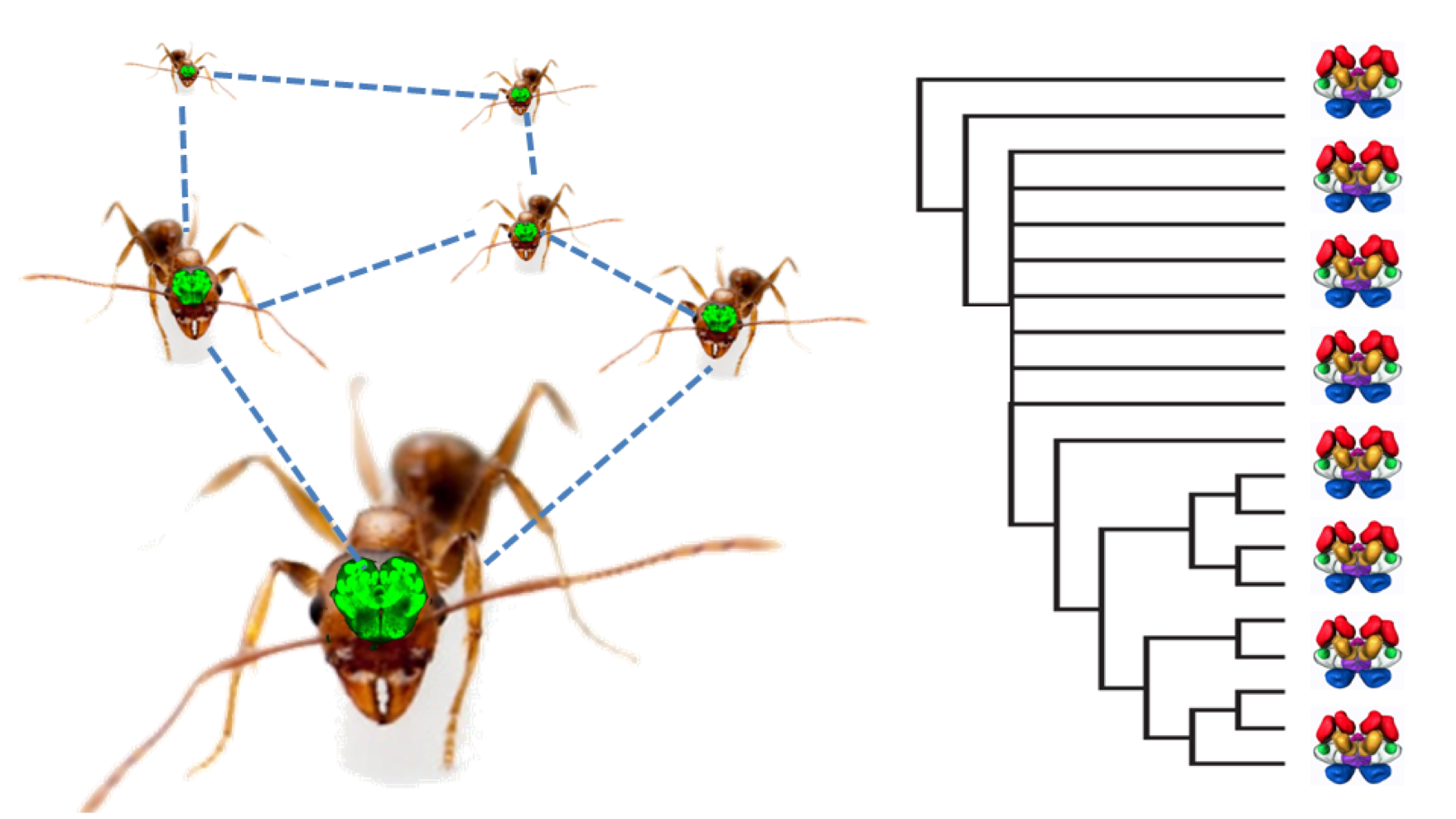
Current research focuses on how social complexity, diet, and emergent behavior impact brain size and structure, from scaling relationships among functionally specialized brain regions and synaptic organization to gene expression and genomic change.

Current research focuses on how social complexity, diet, and emergent behavior impact brain size and structure, from scaling relationships among functionally specialized brain regions and synaptic organization to gene expression and genomic change.
Recent Studies (see also Publications)
Social complexity, division of labor, and brain evolution
Dr. J. Frances Kamhi examined neurobiological underpinnings of division of labor in the socially complex Australasian weaver ant Oecophylla smaragdina, which is considered to be a pinnacle of social complexity in ants, and the more socially basic sister clade Formica subsericea.
Comparative sociobiology and neuroethology of Pheidole
The hyperdiverse ant genus Pheidole contains species that richly vary in ecology and patterns of social organization, including interspecific variation in the number, morphology, and behavioral repertoire of major workers, larger workers that typically specialize on colony defense or food processing. Dr. Mario Muscedere examined social organization, colony size, and worker age impact brain size and structure, and how age-related behaviors are aminergically controlled in Pheidole. Dr. Ysabel Giraldo explored the resilience of behavioral performance and the brain across the minor worker lifespan in P. dentata. In the exceptionally polymorphic ant Pheidole rhea, Dr. Darcy Gordon focused on how these traits may be integrated within and across highly size-variable workers. Current projects are focused on characterizing interspecific age- and size-related metabolic and neural variation in Pheidole major and minor workers.